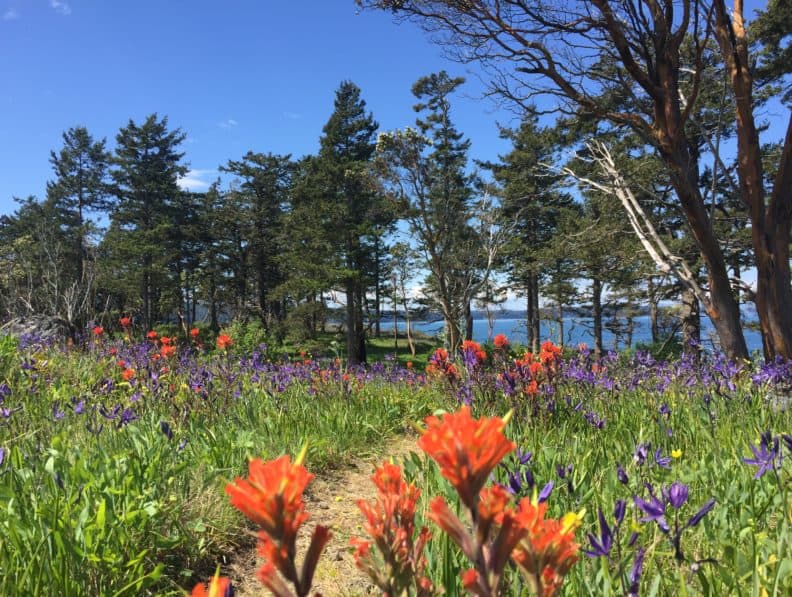
A San Juan Adventure on Orion: Exploring Yellow and Jones Islands by Boat and Boot
Bright blue camas flowers, yellow buttercups, scarlet paintbrush, chocolate lilies, and tall grasses swayed back and forth from the wind across the hillsides of Yellow Island. Phil Green, the Nature Conservancy Caretaker of the island for the past twenty years stated, “This is the second best bloom I have seen in all my time here.”
We were lucky. The whole island was in bloom. Birds were singing. The sun shining bright, and the beautifully-restored 1934 wooden sailboat in which we’d sailed on was anchored 300 yards from shore, waiting for our group’s journey back to Anacortes.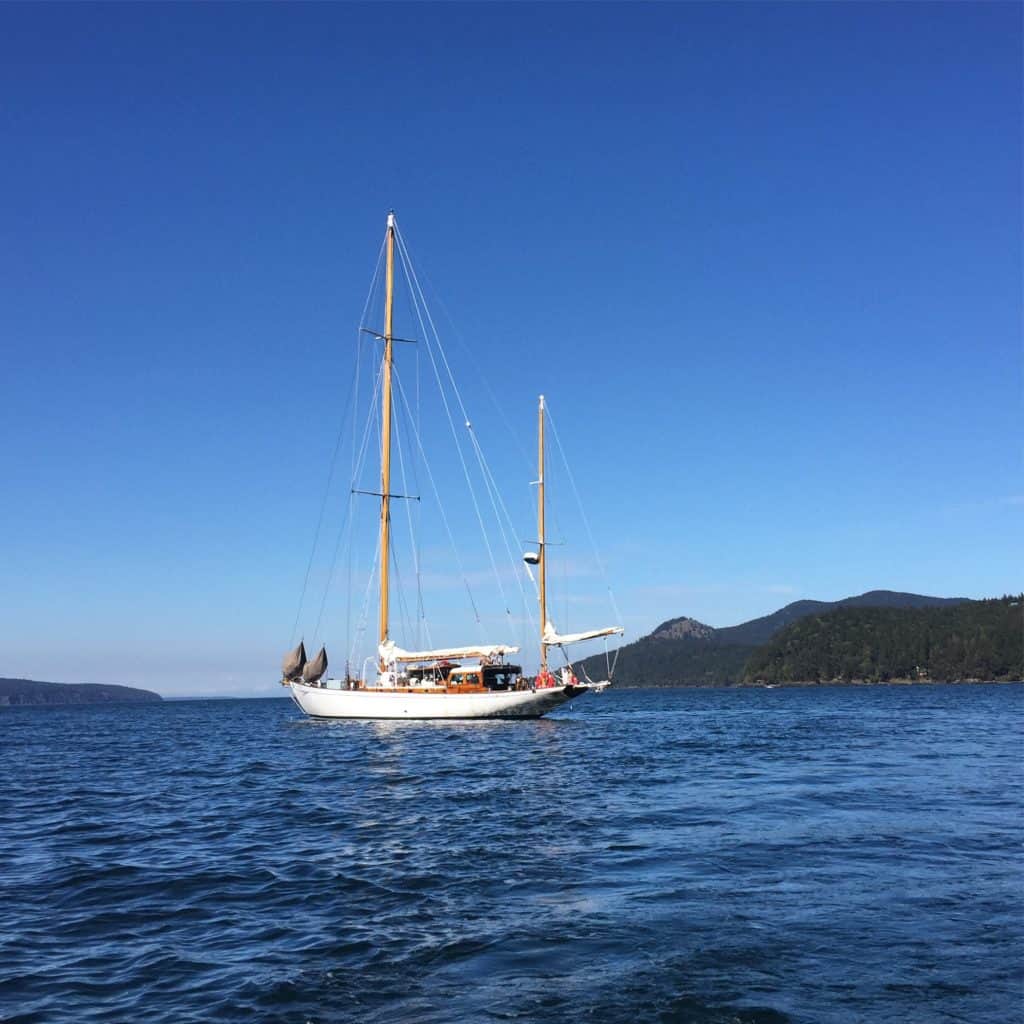
For the weekend of May 5-6, 2018, a group of North Cascades Institute supporters and I set sail on the Orion, a vintage yawl owned by Deep Green Wilderness and captained by Kevin Campion. Our mission was to embark on a natural history field-excursion in the San Juan Islands to see seabirds, marine mammals, island wildflowers, and yes, the prickly-pear cactus: the only cactus species native to Western Washington.
On Friday evening, myself and two other Institute staff drove down valley from the Environmental Learning Center to meet the boat crew, and go over the logistics of our trip before participants arrived in the morning. Once at the marina, I took a deep breath in of ocean brine and seaweed; a distinct smell associated with nothing but pleasant feelings. Then, with delicious grub and brews in hand, we discussed the agenda and trip details before retiring into our bunks aboard the boat. I’d never been on a sailboat before, let alone slept in the belly of one, so it was exciting to curl into my chosen bunk that first night and drift off to sleep in a new place.
That next morning we prepared for participants arrival, and then loaded their gear aboard Orion before setting sail to Jones Island. Jones is a 188-acre State Park with a diversity of landscape features. That evening, after assisting with dinner, I ventured onto a two-mile trail along the shoreline of half the island, and was treated to huge Pacific madrone trees, rocky shorelines, island views and dense forests. Each section of the trail possessed a distinct character.
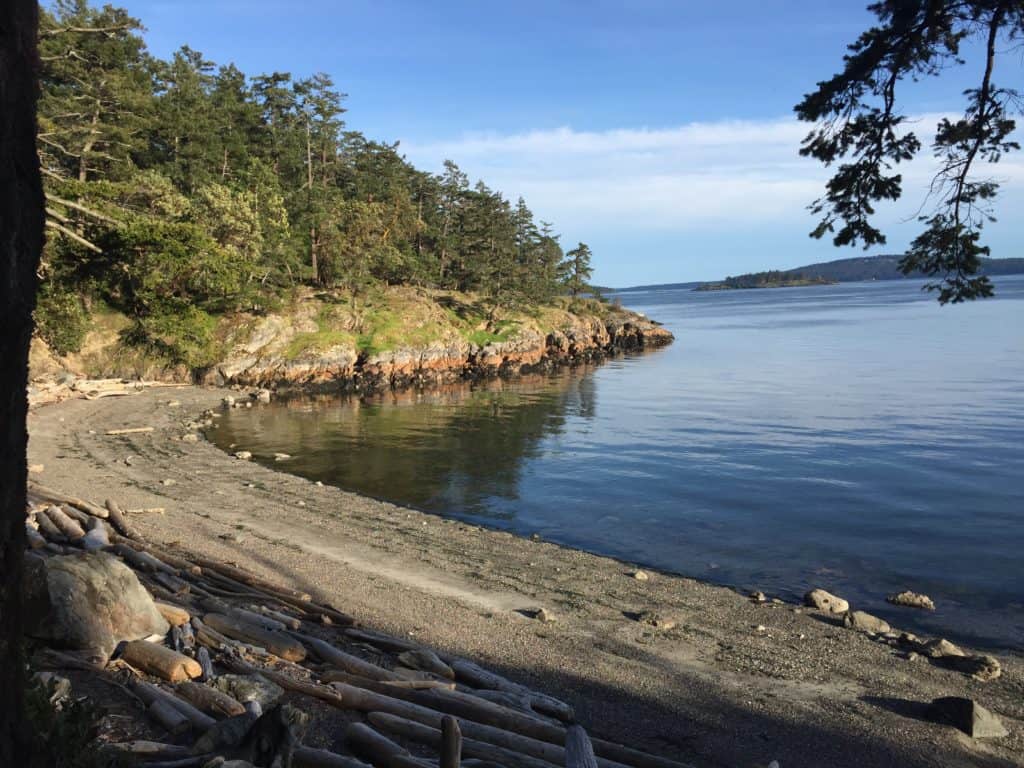
After dinner we enjoyed the sunset as a group along a grassy hillside with the sound of barking sea lions as an auditory backdrop.
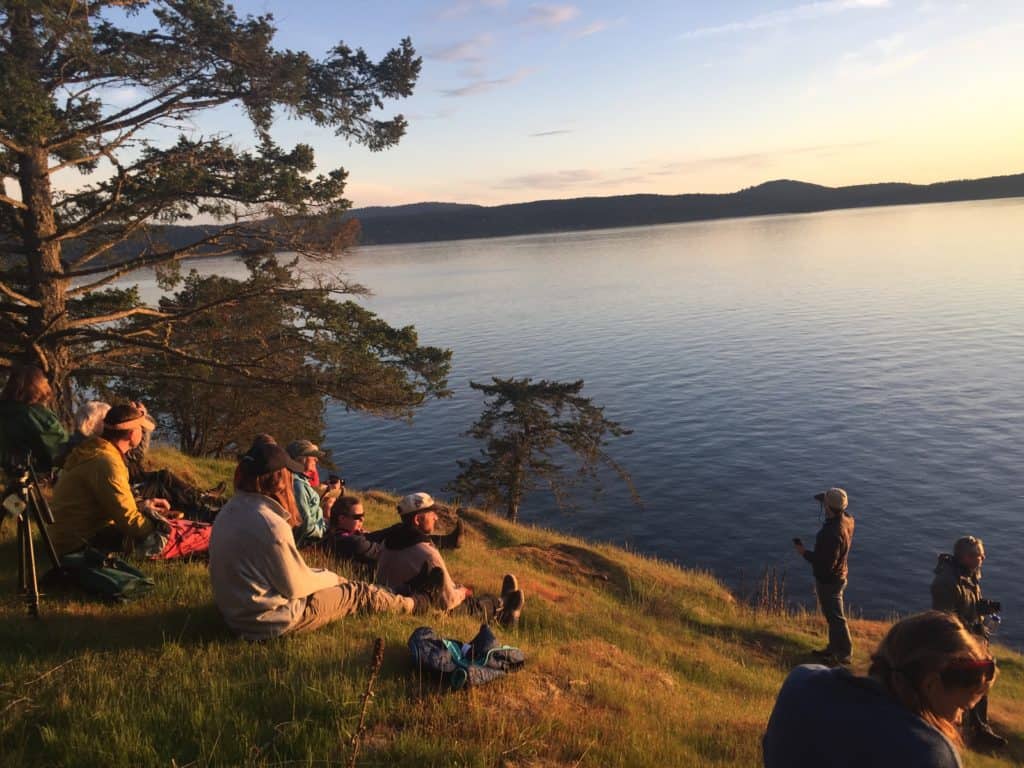

Once the sun was behind the horizon, folks meandered back to our campsite by light of a headlamp. Evan Holmstrom, the Learning Center Program Coordinator, then tended to a campfire and the group gathered, telling ghost stories with faces aglow.
Before bed, some people went down to the water to witness the bioluminescence of organisms creating their own light within the dark sea. To see the light of marine dinoflagellates, I tossed handfuls of pebbles into the water, or splashed my hands across the surface (rather frigid). The burst of blue sparkles from my disturbance was pleasurable to the eyes. I thought I may never leave the shore. Eventually, though, I convinced myself to wander back to my tent and caught a night of peaceful sleep on Jones Island.

Day two, Evan and I made lots and lots of coffee for everyone. The Orion crew brought breakfast ashore and all together we fueled up for the day, excited to explore a jewel of the San Juan Islands – Yellow Island. We then motored over to Yellow, an 11-acre island owned and stewarded by the Nature Conservancy and accessed only by special permission. There I saw the most spectacular display of wildflowers I have ever seen in an environment other than the subalpine of Mount Rainier!
A dense and diverse collection of native wildflowers covered large stretches of the landscape, like a large patchwork quilt full of distinct patterns and colors. Myself, Evan, a crew member, and a participant named Lynn naturalized as a team during our hike around the island. Meanwhile, two other groups also moseyed along the trails: one was more bird-focused, and the other more plant-focused. My hiking group was enthusiastic about everything, so we self-identified as “The Indecisive Group!” I was pleased to spend time on the beach and explore the tide pools, as well as admire the botanical beauty and bird song surrounding us.
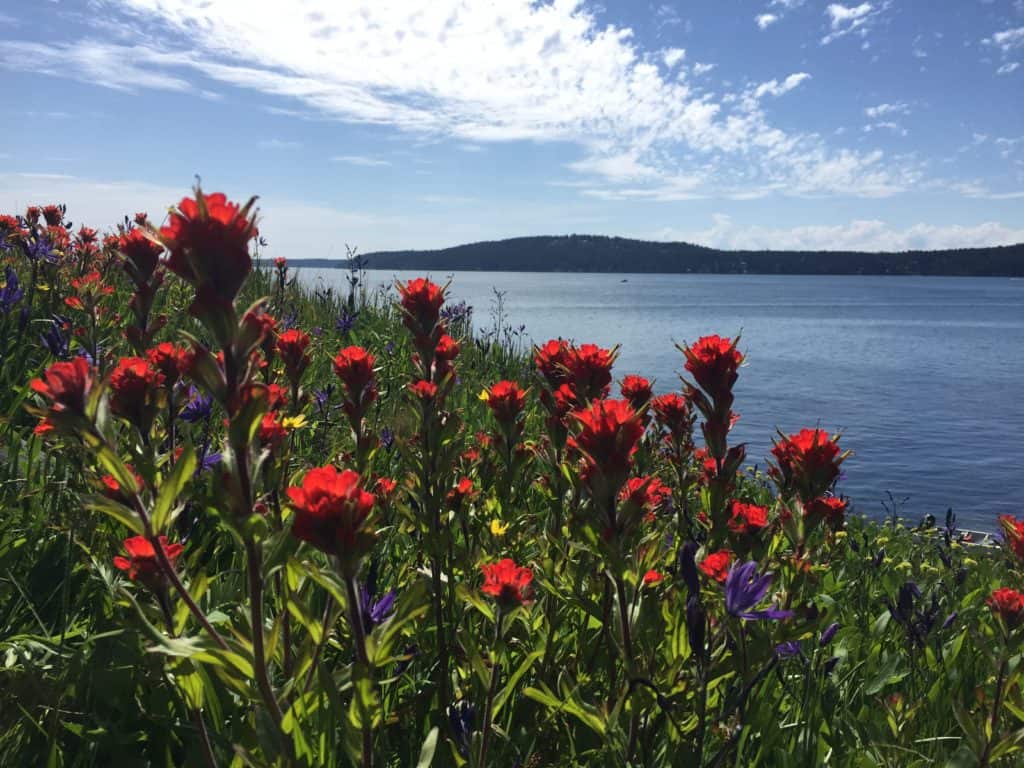
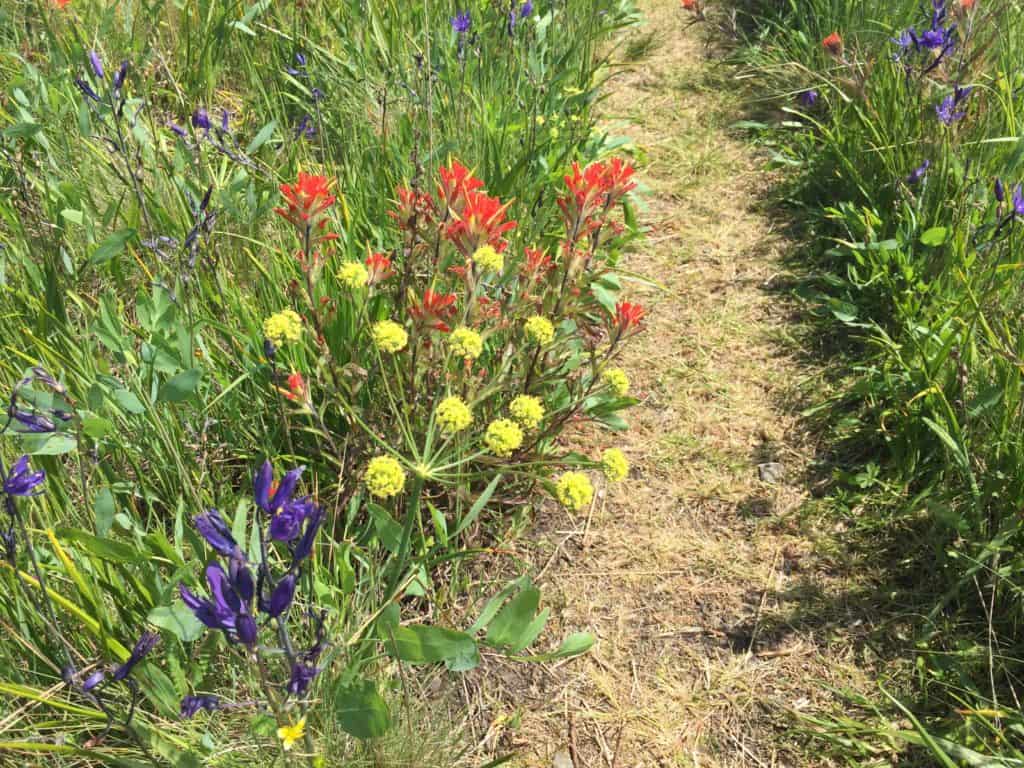
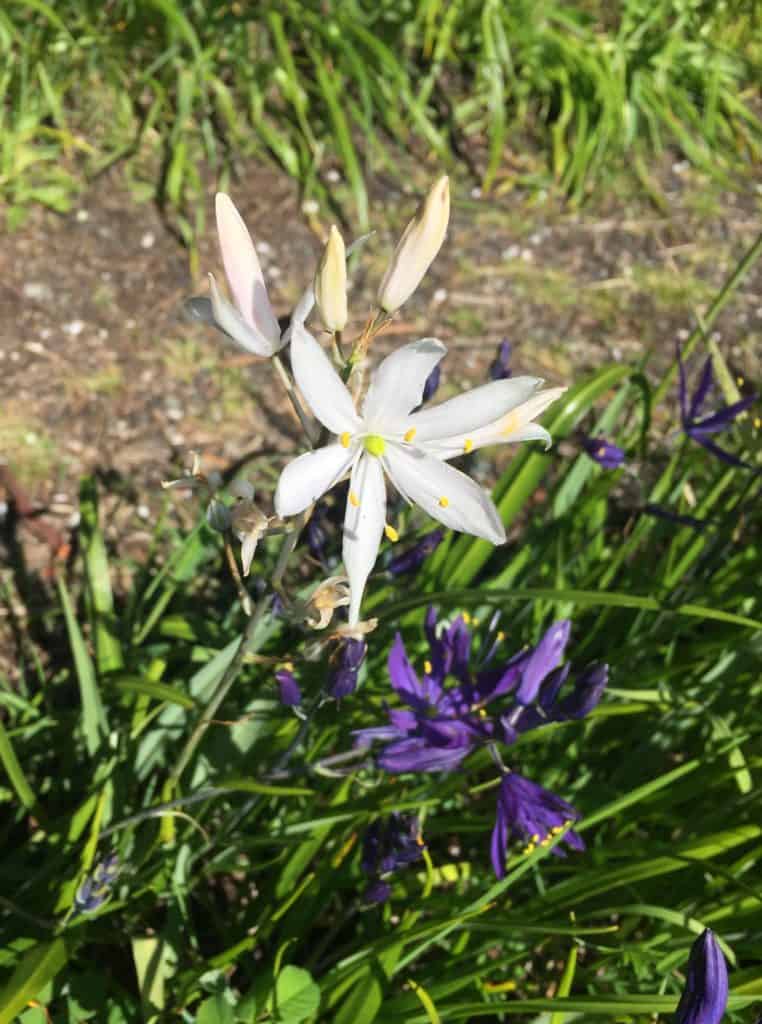
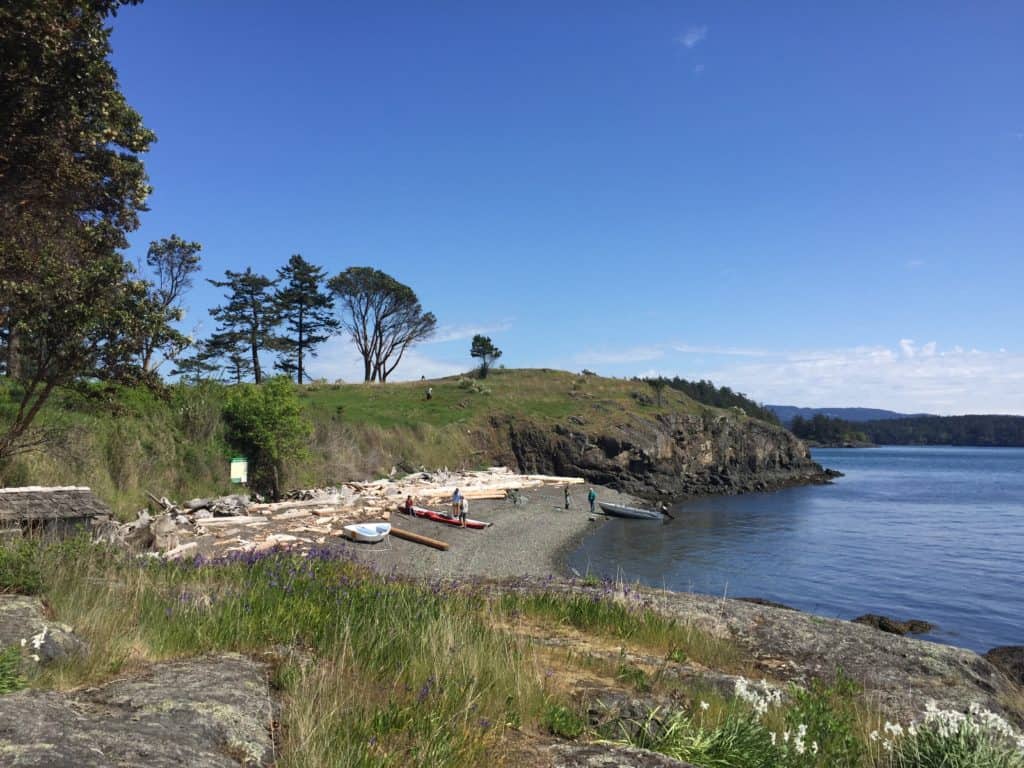
On the beach, we identified periwinkles, hermit crabs, limpets, sculpin, and encrusted seaweeds at low tide. There we also saw oystercatchers and harlequin ducks around, bobbing in the sea. I never wanted to leave. At one point I stated, “I love every inch of this island… all 11-acres!” and meant it from the bottom of my heart.

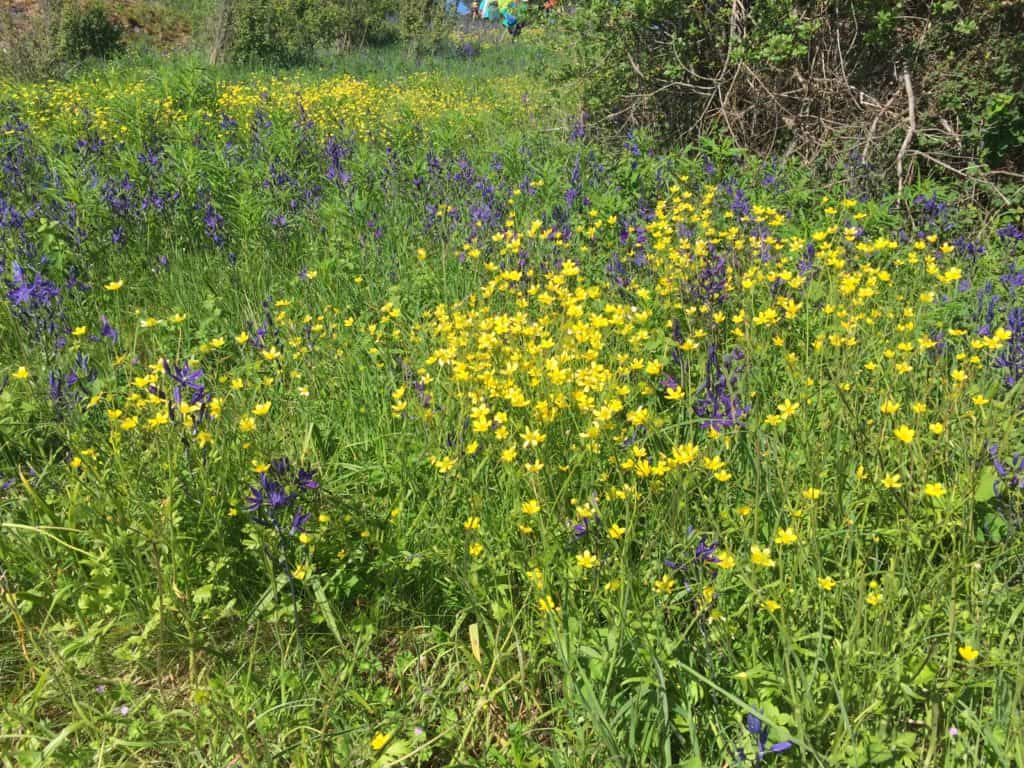
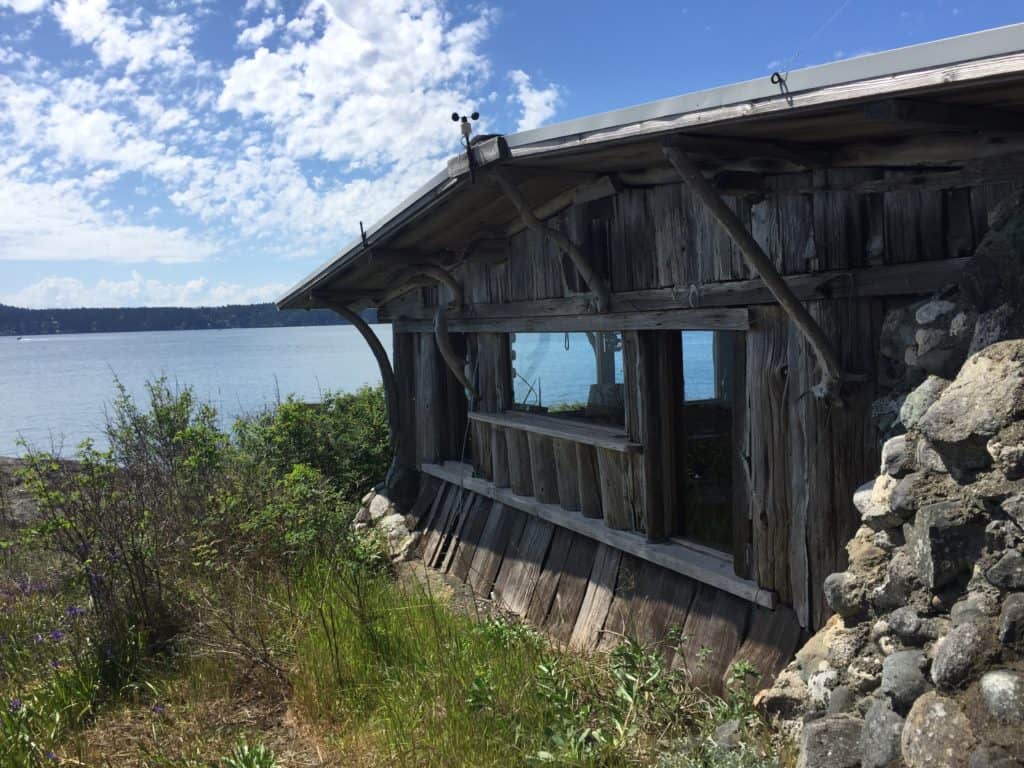
I can only imagine the joy Phil has experienced from being acquainted with this special place for two whole decades. What would it be like to live in the small, driftwood cabin noting seasonal changes in your nature journal? I’m sure his phenological record is admirable.
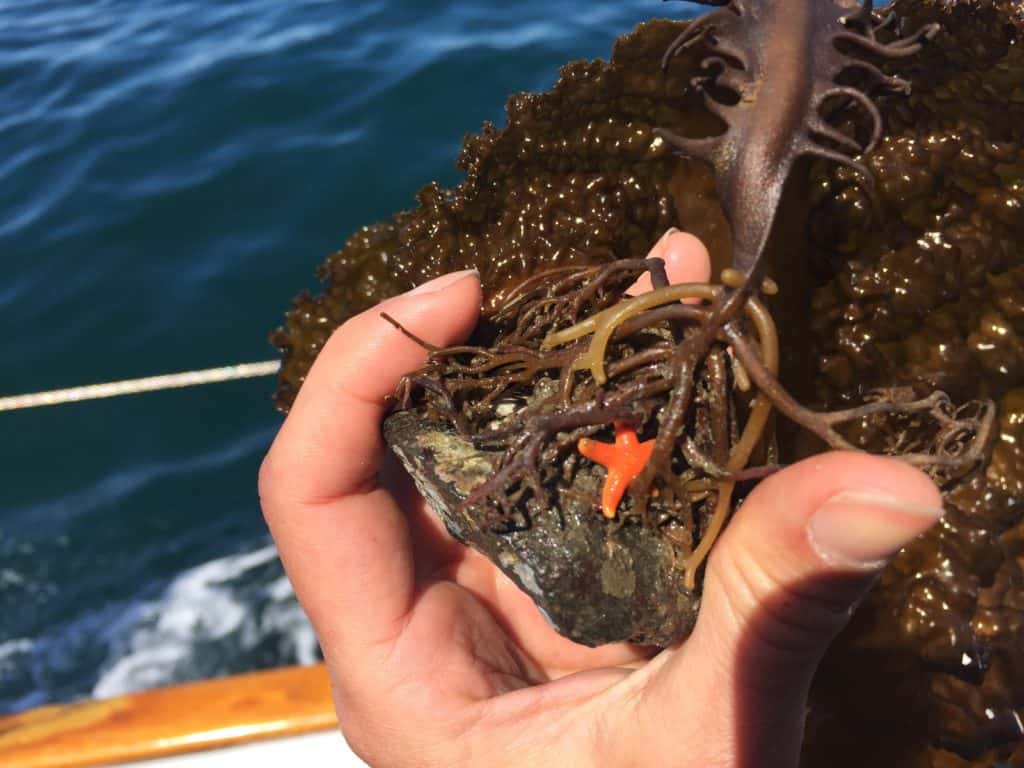
Once our time was up on Yellow, we slowly made our way back to the Cap Sante Marina with Orion’s sails raised, during which us humans sat quietly on the boat, feeling crispy from the sun and a bit sleepy. After unloading, and saying our goodbyes to the lovely participants, the Deep Green Wilderness crew and our Institute team debriefed, unloaded gear and of course swabbed the deck. The entire trip I had a fun time observing the art of sailing and navigation from such a knowledgeable and competent crew. Who knew I’d one day be wiping down every wooden surface of a sailboat with a bottle of all-purpose cleaner?
The next opportunity to explore by boat and boot with the North Cascades Institute and Deep Green Wilderness will be in September. Registration is currently full, but there is the chance to sign-up for the wait list.
To watch a beautiful video of the Orion exploring the Salish Sea, click here.


Lovely.
Thank you for the journal and pictures – so enjoyable – I don’t want to leave either!